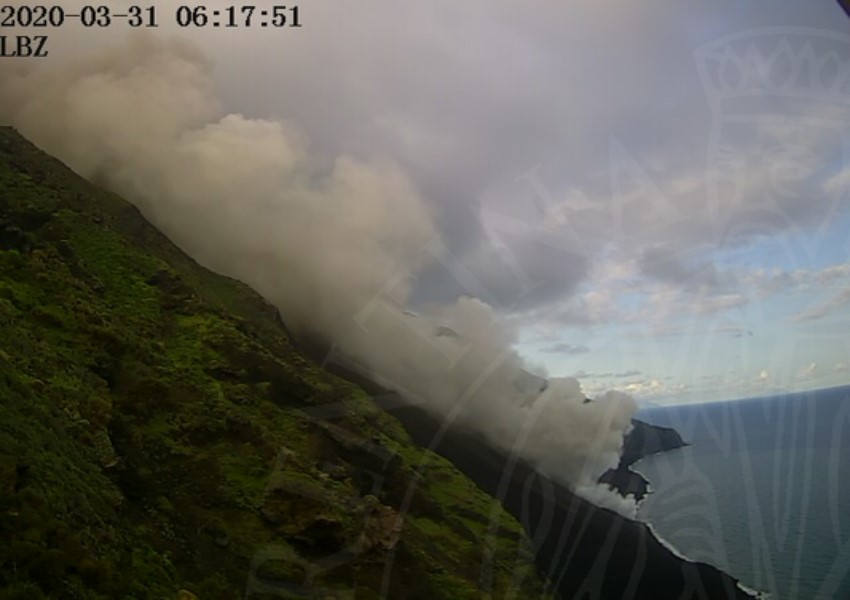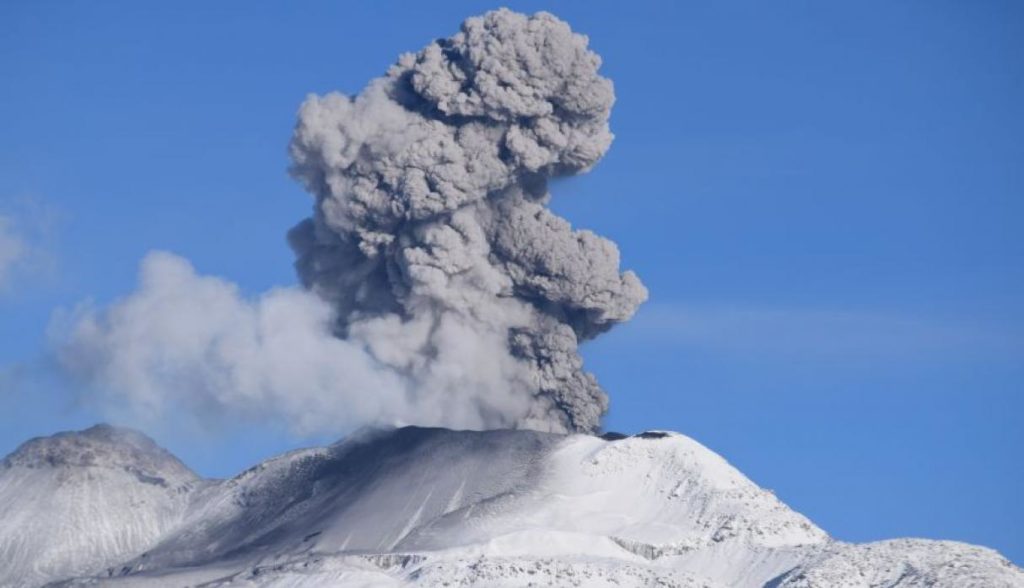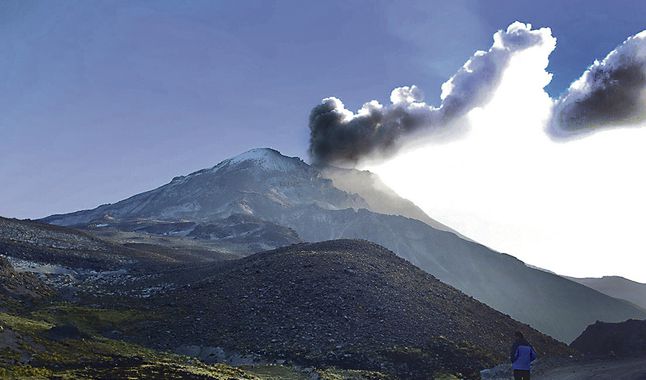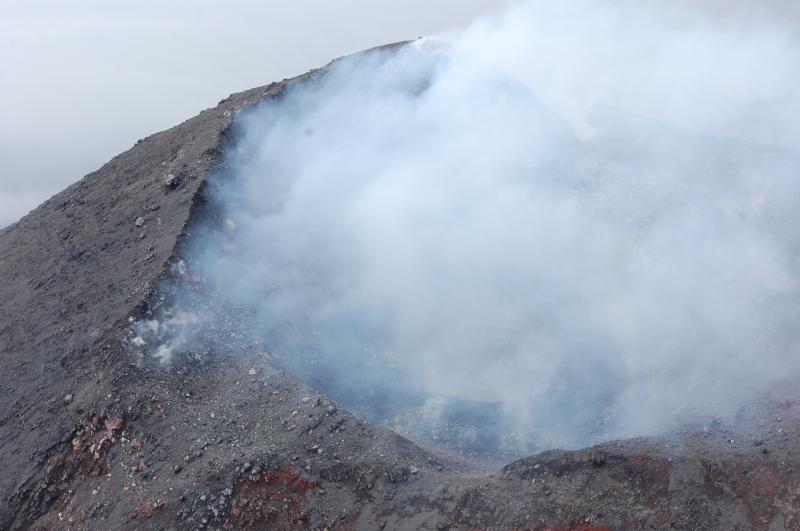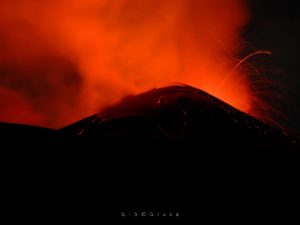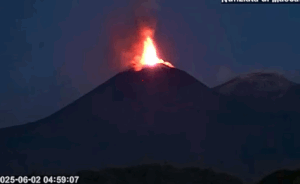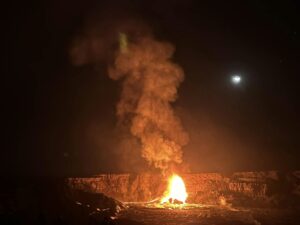March 31 , 2020.
Peru , Sabancaya :
Analysis period: March 23 to 29, 2020. Arequipa, March 30, 2020.
Alert level: ORANGE
The Peruvian Geophysical Institute (IGP) reports that the eruptive activity of the Sabancaya volcano remains at moderate levels; that is to say with the continuous recording of moderate explosions and consequent emissions of ash and gas. Consequently, for the following days, no significant change is expected regarding its activity.
During the aforementioned period, the IGP recorded and analyzed the occurrence of approximately 536 earthquakes of volcanic origin, associated with the circulation of fluids (magma, gas, etc.) inside the volcano. In addition, an average of 16 medium to low intensity explosions were recorded daily.
Monitoring the deformation of the volcanic structure does not record any significant anomalies. Visual surveillance identified columns of gas and ash up to 3 km above the summit of the volcano, which were scattered towards the western, southwest and southern sectors of the Sabancaya. Satellite surveillance identified the presence of 5 thermal anomalies with values between 2 MW and 13 MW, associated with the presence of a body of lava on the surface of the crater of the volcano.
Source : IGP.
Photo : Ingemmet.
Iceland , Thorbjorn :
Seismic activity and deformation around Mt. Thorbjorn:
Yesterday morning at 7:15 an earthquake M2.6 occurred 4km NNE of Grindavík and was felt in Grindavík. Considerable seismic activity has been ongoing in the area during the last weeks in connection with deformation in the area.
Uncertainty phase that Civil Protections declared due to this activity is still in force
The activity at Grindavík still remained high this week after an earthquake swarm that started on the 12th of March. This is the same area as where the previous earthquake swarms earlier this year occurred. Around 1000 earthquakes were located on Reykjanes Peninsula. The largest earthquake of the week was of M4,2 on the 18th of March, about 5 km NW of Gunnuhver on Reykjanes peninsula. The earthquake was widely felt in the southwestern part of Iceland. On the 19th of March, an earthquake of M3,5 occurred jsut 3,5 km NW of Grindavík. An earthquake of M3,0 occurred on the 20th of March by Kleifarvatn on the Reykjanes peninsula, where an small earthquake swarm took place the same day.
Source : IMO.
Photo : mbl.is/Kristinn Magnússon
Italy , Stromboli :
PRESS RELEASE ON THE VOLCANIC ACTIVITY OF March 31, 2020, 01:51:07 UTC (03:51:07 LOCAL HOURS) – STROMBOLI.
The National Institute of Geophysics and Volcanology, Etnean Observatory, informs that the surveillance networks recorded at 03:51 hours (01:51 UTC), a lava overflow from the crater terrace. [Please note that this is the time of issue of the press release, not the start of the activity, specified below.]
Starting at approximately 23:40 UTC on March 30, 2020, a lava overflow from the crater terrace reached the coastline at approximately 01:50 UTC on March 31.
At the same time as volcanic phenomenology, a seismic signal associated with avalanche events due to the rolling of incandescent blocks along the Sciara del Fuoco is observed.
The images below were filmed by the 400 m video camera on the north side of the Sciara del Fuoco .
Source : INGV Vulcani .
Peru , Ubinas :
Analysis period: March 23 to 29, 2020. Arequipa, March 30, 2020.
Alert level: ORANGE
The Geophysical Institute of Peru (IGP) reports that the eruptive activity of the Ubinas volcano remains at low levels. To date, the recording of earthquakes associated with the rise of magma to the surface is rare. There are light and sporadic emissions of bluish gases (of magmatic origin) and water vapor. According to this scenario, the possibility of volcanic explosions and / or ash emissions is low.
The IGP recorded and analyzed 81 seismic events associated with the dynamic behavior of the Ubinas volcano, with the predominance of volcano-tectonic events (VT), related to the fracturing of rocks inside the volcano. On average, 9 earthquakes were recorded per day with magnitudes below M1.2. The seismic activity linked to the rise of magma (hybrid type) decreases both in number of events (2 daily earthquakes) and in energy.
Surveillance cameras recorded light and sporadic emissions of volcanic gases and water vapor, with heights less than 600 m above the summit of the volcano. Monitoring the deformation of the volcanic structure does not record any significant anomalies. MIROVA satellite monitoring did not record any thermal anomalies.
Source : IGP.
Photo : larepublica.pe.
Alaska , Cleveland :
52°49’20 » N 169°56’42 » W,
Summit Elevation 5676 ft (1730 m)
Current Volcano Alert Level: ADVISORY
Current Aviation Color Code: YELLOW
No significant seismicity has occurred at Cleveland volcano over the past 24 hours. However, there have been several temporary outages of the stations on the island. No explosive activity was detected from the direction of Cleveland on regional infrasound arrays. Satellite images and web camera views were cloudy.
Photos of the summit crater of Cleveland Volcano. Though gas obscured a clear view into the crater, we could make out a « doughnut » shaped lava dome with a collapse crater in the center.
Episodes of lava effusion and explosions can occur without advance warning. Explosions from Cleveland are normally short duration and only present a hazard to aviation in the immediate vicinity of the volcano. Larger explosions that present a more widespread hazard to aviation are possible, but are less likely and occur less frequently.
Cleveland volcano is monitored by only two seismic stations, which restricts AVO’s ability to detect precursory unrest that may lead to an explosive eruption. Rapid detection of an ash-producing eruption may be possible using a combination of seismic, infrasound, lightning, and satellite data.
Source : AVO .
Photo : Kaufman, Max

